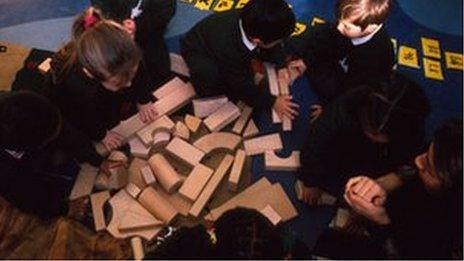Schools face 'places breaking point'
- Published
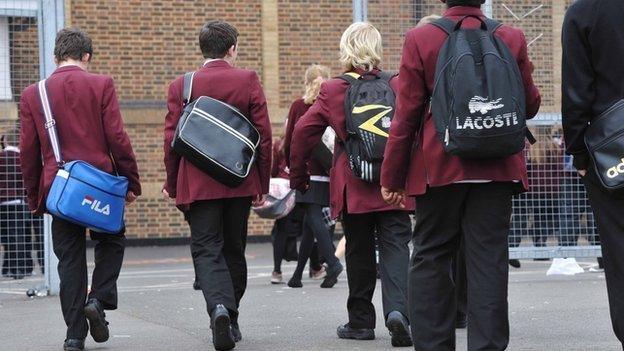
By 2023 there are expected to be more than eight million pupils at school in England
The cost of creating places for the 880,000 extra pupils expected in England by 2023 could push schools to breaking point, council leaders warn.
The Local Government Association fears the demand for school places could soon reach a tipping point with no more space or money to extend schools.
The LGA wants the government to fully fund the cost of all the extra places, calculated to run to £12bn.
Ministers said the last Labour government had failed to plan ahead.
Official government figures, published last year, , externalproject that by 2023 there will be a total of 8,022,000 pupils in England's schools - up from 7,143,000 in the current academic year.

'Shortfall'
The school population bulge is most acute in major cities, according to the National Audit Office, with the birth rate rising faster than at any time since the 1950s.
Some suburban areas have seen a rise in the number of families with school-age children, due to changes in work patterns - while the school population has fallen in some rural areas.
The NAO has said the rising birth rate is related to a 6% increase in the number of women of child-bearing age since 2003, plus more older women having babies.
Official figures for 2013, external show that more than a quarter of births (26.5%) in England and Wales were to women born outside the UK - that is 185,075 babies out of a total of 698,512 born that year.
Similar figures for 2002, external show 596,122 live births of which 17.7% were to women born overseas.
The LGA says the cost of creating places for all these pupils could be £12bn, meaning the government's commitment of £7.35bn for extra school places leaves a shortfall.
As well as more central government funding, it wants councils to be given the powers to open new schools to meet local need without bureaucratic burdens.
The association's comments come ahead of Thursday's deadline for the parents of some 370,000 three and four-year-olds to apply for school places for their children.
It says councils are "pulling out all the stops to ensure there is a place for every child".
An over-subscribed school in South Yorkshire was forced to build modular classrooms to cope with a surge in the number of pupils
Separate figures from the Labour Party suggest almost one in five primary schools is already over capacity.
The party sent Freedom of Information requests to England's 152 local education authorities - 130 replied.
The responses suggested 18% do not have enough capacity for their pupils, with children in over-large classes or temporary makeshift classrooms.
Double-decker
These include a primary school in Northumberland which is holding classes in a converted double-decker bus, and another in Bristol which has taken over an old police station.
More than three-quarters (78%) of the councils that responded saw a need for additional primary places in the next three years, with half saying they would need more secondary places.

Central First School in Ashington, Northumberland is using a bus as a classroom after the number of pupils rose from about 400 to 550 in six years
David Simmonds, chairman of the LGA's children and young people board, said: "We are calling on the government to commit to funding the creation of school places and hand councils the powers to open new schools, for both primary and secondary-age pupils, before time runs out."
He said councils were trying to create places on time and in the right places but were hampered by red tape and lack of money.
"The scale of this crisis is too much for council taxpayers to pay for alone.
"Additionally, much of the decision-making about new school places rests in the hands of the government, whose funding for school places came late.
"As a consequence, councils are carrying a billion pounds worth of costs which puts pressure on other school services."
The government has focused funding on new schools for academies and free schools, which are independent of local authority control.
'Basic need'
Education Secretary Nicky Morgan told BBC Radio 4's Today programme that the spaces would be provided by academies and free schools, and £5bn had been spent in this parliament so far on the creation of new places.
"By the time we get all the free schools in the pipeline up and running, they will be providing over 200,000 new places across the country," she said.
"Seventy per cent of free schools that have been opened have been opened in areas of basic need."
Class size was important but so was the quality of education and number of teachers in the classroom, she added.
Labour says government policy means local authorities are unable to build schools in areas where they are needed while allowing free schools to open in areas where there are already surplus places.
Shadow education secretary Tristram Hunt said parents had a "big choice" to make at the May election.
"On education the choice is this: a Labour Party committed to sensible and pragmatic solutions for overcoming the growing pressures on school places, or David Cameron's irresponsible schools policy that prioritises money for new schools in areas with surplus places," he said.
Conservative Education Minister Nick Gibb blamed the crisis on Labour.
"The last Labour government failed to plan for the future, cutting funding for school places during a baby boom while allowing immigration to get out of control, and they wasted millions of pounds of taxpayers' money on their failed building schools for the future programme," he said.
Natalie Evans director of the New Schools Network, which represents free schools, said they were "playing an important part" in helping address the places crisis.
Some 86% of primary free schools are in areas with a projected need for places "rising to 100% in London where the shortage is most acute", said Ms Evans.
- Published13 January 2015

- Published27 August 2014
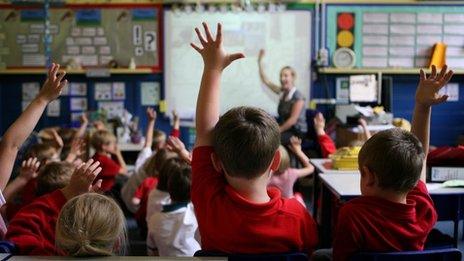
- Published12 June 2014
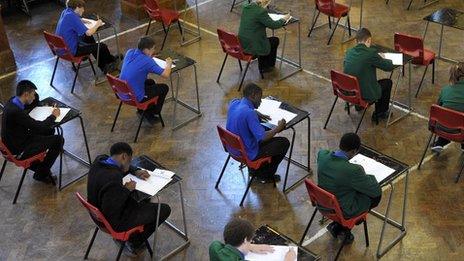
- Published14 March 2014
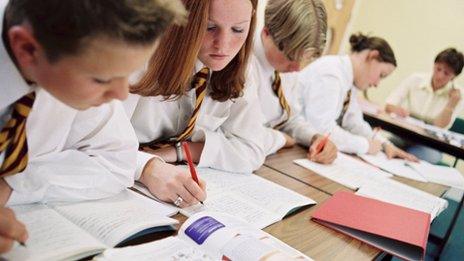
- Published15 March 2013
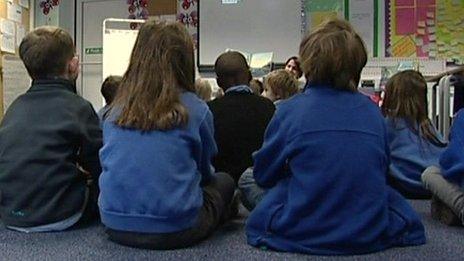
- Published3 September 2013

- Published24 July 2013
